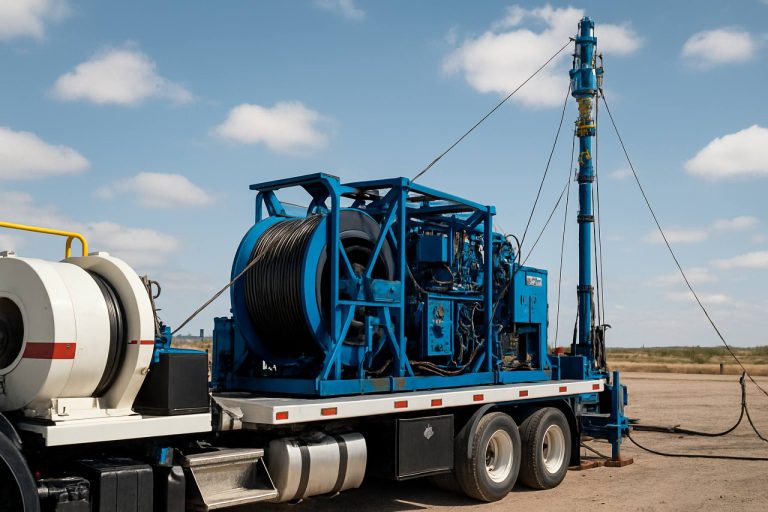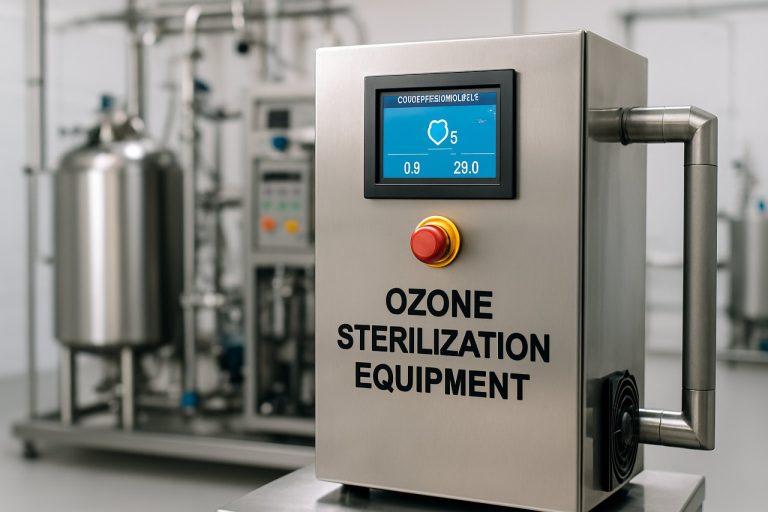
Table of Contents
- Executive Summary: Key 2025 Insights & Takeaways
- Market Size & Growth Forecasts Through 2030
- Cutting-Edge Ozone Sterilization Technologies: Current Leaders & Emerging Trends
- Major Players: Manufacturer Strategies and Innovations
- Regulatory Landscape & Global Standards (2025 Update)
- Competitive Analysis: Differentiators in Product Engineering
- Application Spotlight: Healthcare, Pharma, Food, and Industrial Uses
- Sustainability & Environmental Impact of Ozone Sterilization
- Challenges, Risks, and Barriers to Adoption
- Future Outlook: What’s Next for Ozone Sterilization Equipment Engineering?
- Sources & References
Executive Summary: Key 2025 Insights & Takeaways
Ozone sterilization equipment engineering continues to advance rapidly in 2025, driven by heightened demand for sustainable disinfection methods across healthcare, pharmaceutical, food processing, and water treatment sectors. Ozone’s proven efficacy as a broad-spectrum antimicrobial agent, coupled with its on-site generation and residue-free breakdown, is propelling adoption and fostering notable engineering innovations.
Key developments in 2025 center on system automation, integration with digital monitoring, and enhanced safety protocols. Major manufacturers such as Sanai Health and Soteria Ozone have released next-generation ozone generators featuring real-time process controls, IoT connectivity, and precise ozone dose management to meet stricter regulatory requirements and ensure consistent sterilization outcomes.
In the healthcare sector, ozone-based room and equipment disinfection solutions are increasingly deployed for rapid turnaround between patients, while minimizing chemical exposure risks. For instance, Ozone Solutions has introduced modular systems tailored for hospital environments, reporting reduced cycle times and energy consumption. These innovations are expected to further expand ozone’s role in infection control, especially amid ongoing global concerns about antimicrobial resistance and healthcare-associated infections.
The food and beverage industry is also accelerating adoption, with companies like Primozone engineering scalable ozone systems integrating with production lines for continuous surface and equipment sterilization. This shift is underpinned by regulatory endorsements, such as the US FDA’s recognition of ozone as Generally Recognized as Safe (GRAS) for food processing, and the growing consumer demand for chemical-free sanitation methods.
Water treatment remains a core application: utilities and industrial operators are upgrading to high-efficiency ozone systems to address emerging contaminants and comply with more stringent water quality standards. Xylem has expanded its ozone product line with energy-optimized generators and advanced monitoring for municipal and industrial water reuse projects.
- Digitalization and automation are now standard, improving reliability and traceability of sterilization processes.
- Enhanced safety engineering is reducing occupational exposure and operational risks.
- Integration with sustainability goals is accelerating, given ozone’s minimal environmental footprint when properly managed.
Looking ahead, the sector is poised for continued growth and diversification, supported by ongoing engineering innovation, regulatory support, and a global push toward greener, residue-free sterilization. Manufacturers and end users alike will prioritize system flexibility, scalability, and lifecycle performance as key criteria in ozone sterilization equipment engineering.
Market Size & Growth Forecasts Through 2030
Ozone sterilization equipment engineering is experiencing notable growth as industries such as healthcare, pharmaceuticals, food processing, and water treatment increasingly adopt advanced sterilization solutions. As of 2025, the global market is being shaped by heightened awareness of infection control, stringent regulatory requirements, and an ongoing push toward sustainable, chemical-free disinfection technologies.
Key manufacturers such as SUEZ – Ozonia, Xylem – Wedeco, and Trosten Industries are investing in engineering innovations focused on improved energy efficiency, scalability, and integration with digital monitoring systems. These companies are responding to rising demand from hospitals, where ozone’s efficacy against a broad spectrum of pathogens is driving adoption, especially in surgical instrument sterilization and room disinfection applications.
In 2025, the market is expected to continue its upward trajectory, with analysts from sector participants indicating double-digit annual growth rates in key regions such as North America, Europe, and Asia-Pacific. For example, SUEZ has reported increased orders for its modular ozone generator systems in both healthcare and municipal water sectors. Similarly, Xylem has highlighted the rapid expansion of ozone-based disinfection for food and beverage processing, citing its low chemical residue and operational safety advantages.
Recent events shaping the market include accelerated investment in R&D for compact, portable ozone sterilization units, reflecting demand from outpatient clinics and ambulatory surgical centers. Companies such as Trosten Industries are showcasing next-generation systems engineered for lower energy consumption and enhanced automation, aligning with facility sustainability goals.
Looking through the rest of the decade, the outlook remains positive. Industry sources anticipate continued engineering advancements, particularly in IoT-enabled monitoring, predictive maintenance, and integration with building management systems. With regulatory agencies in regions like the European Union and the United States encouraging greener sterilization alternatives, ozone sterilization equipment is poised for steady adoption. Market participants anticipate that by 2030, the sector will have shifted toward highly modular, user-friendly, and digitally connected ozone systems, further broadening their use cases and geographic reach.
Cutting-Edge Ozone Sterilization Technologies: Current Leaders & Emerging Trends
Ozone sterilization equipment engineering is advancing rapidly in 2025, driven by urgent demands for sustainable, residue-free disinfection across healthcare, food processing, and water treatment sectors. Ozone, a powerful oxidant, achieves high-level sterilization without the environmental and health hazards associated with traditional chemical disinfectants. This has positioned ozone technology as a leading solution for both high-throughput industrial applications and compact, point-of-use scenarios.
Several manufacturers are spearheading innovation in ozone sterilization equipment. SUEZ Water Technologies & Solutions continues to expand its portfolio of advanced ozone generators for municipal and industrial water treatment, emphasizing energy efficiency and remote monitoring. Their recent systems incorporate digital controls and predictive maintenance features, aligning with Industry 4.0 trends.
In healthcare, Getinge has rolled out new low-temperature ozone sterilizers for medical devices, offering effective sterilization for heat-sensitive instruments. These systems are designed to comply with evolving regulatory requirements and integrate seamlessly into hospital workflows. Similarly, Shimadzu Corporation is leveraging its expertise in precision engineering to develop compact ozone sterilizers for laboratory and pharmaceutical environments, focusing on reliability and minimal ozone leakage.
The food industry is witnessing adoption of ozone technology for surface and air sterilization within processing plants. Mitsubishi Electric has introduced ozone generation equipment tailored for large-scale food safety applications, emphasizing rapid action and residue-free operation. Their modular designs allow customization for specific production lines, improving operational flexibility.
Emerging trends in 2025 include integration of real-time ozone concentration sensors, closed-loop control systems, and remote diagnostics to maximize safety and efficiency. Equipment is increasingly designed for plug-and-play installation, enabling retrofitting in existing facilities without major infrastructure overhauls. Industry bodies such as the International Ozone Association are collaborating with manufacturers to standardize performance metrics and safety guidelines, ensuring consistent quality as market adoption accelerates.
Looking ahead, the next few years are expected to bring further miniaturization, energy optimization, and AI-driven process automation to ozone sterilization equipment. This will broaden the technology’s reach into decentralized healthcare settings, small food producers, and even public transportation, underlining the sector’s strong growth trajectory and increasing relevance for global sterilization needs.
Major Players: Manufacturer Strategies and Innovations
In 2025, the landscape of ozone sterilization equipment engineering is being shaped by a select group of leading manufacturers, each pursuing distinct strategies to address rising demand for chemical-free, high-efficacy sterilization across healthcare, pharmaceutical, and food sectors. Companies are prioritizing innovation, compliance with tightening global standards, and system integration to stay ahead in a competitive market.
One of the major players, OZO CleanTech, has invested significantly in modular ozone generator systems capable of rapid sterilization for hospital rooms and surgical suites. Their latest models feature real-time ozone concentration monitoring and automated safety shutoff, addressing concerns around operator exposure and environmental impact. In 2025, OZO CleanTech announced the integration of remote IoT diagnostics, enabling predictive maintenance and fleet management for multi-site healthcare providers.
Meanwhile, SEMTROTECH has expanded its product line to include compact, mobile ozone sterilizers targeting ambulatory surgical centers and small clinics. Their focus on portability and ease of use reflects a broader industry trend towards decentralized disinfection solutions. SEMTROTECH’s latest units utilize advanced ceramic dielectric ozone cells, improving energy efficiency and reducing maintenance intervals—a key differentiator in cost-sensitive environments.
In the pharmaceutical manufacturing space, Ozonia (a brand of SUEZ) remains at the forefront, leveraging its extensive expertise in ozone generation for water treatment to engineer sterilization chambers and pass-through cabinets. In 2025, Ozonia launched a new validation-ready series designed to help pharmaceutical clients comply with Annex 1 of EU GMP regulations. This move underlines the growing importance of regulatory compliance as a driver for innovation.
Japanese manufacturer Nikkiso has concentrated on ozone sterilization for medical device reprocessing. Their latest engineering efforts focus on integrating ozone cycles with automated endoscope washers, offering both high-level disinfection and full traceability. Nikkiso’s R&D is also exploring the combination of ozone with UV-C for synergistic antimicrobial effects, a direction expected to gain traction in the coming years.
Looking ahead, leading equipment manufacturers are expected to further invest in digitalization, energy efficiency, and cross-platform compatibility, responding to the dual pressures of sustainability mandates and operational cost control. As regulatory requirements evolve and end-user expectations rise, innovation in ozone sterilization engineering will increasingly revolve around system intelligence, user safety, and data-driven process optimization.
Regulatory Landscape & Global Standards (2025 Update)
The regulatory landscape for ozone sterilization equipment engineering is undergoing significant evolution in 2025, shaped by increasing adoption in healthcare, food processing, and industrial applications. Regulatory agencies across the globe are updating standards to ensure safety, efficacy, and environmental compliance of ozone-based sterilization technologies.
In the United States, the Food and Drug Administration (FDA) continues to play a central role in the regulation of medical devices utilizing ozone sterilization. The FDA maintains guidance on premarket submissions for sterilizers, emphasizing validation of sterilization efficacy and material compatibility (U.S. Food & Drug Administration). As more manufacturers seek 510(k) clearance for ozone sterilization equipment, there has been an uptick in the submission of performance data and real-world use cases. In 2025, the FDA is expected to update its guidance to address emerging engineering controls and digital monitoring capabilities now integrated into new generation ozone sterilizers.
In Europe, the Medical Device Regulation (MDR) (EU 2017/745) governs the conformity assessment of medical devices, including ozone sterilization systems. The European Committee for Standardization (CEN) is advancing harmonized standards, particularly EN 1422 and EN ISO 14937, which set out requirements for sterilizers and sterilization processes, respectively. Manufacturers such as STERIS and Getinge are actively engaging with Notified Bodies to ensure compliance with these evolving requirements, supporting device traceability, risk management, and post-market surveillance.
Asia-Pacific markets, led by Japan and China, are also strengthening regulatory oversight. The Pharmaceuticals and Medical Devices Agency (PMDA) in Japan has issued updated technical guidance for ozone sterilization, emphasizing the need for rigorous testing and biocompatibility assessments. Chinese authorities, through the National Medical Products Administration (NMPA), are standardizing requirements for ozone sterilization equipment registration, mirroring international norms for performance and safety.
Environmental regulations are increasingly influential. Agencies such as the U.S. Environmental Protection Agency (EPA) require that ozone emissions from sterilization equipment remain within safe occupational exposure limits (U.S. Environmental Protection Agency). Manufacturers like Advanced Sterilization Products are responding by integrating advanced containment and monitoring systems to limit ozone leakage and ensure operator safety.
Looking ahead, the regulatory framework for ozone sterilization equipment is set to become more harmonized internationally, with a focus on digital traceability, environmental sustainability, and real-time performance monitoring. These changes will shape engineering priorities and product development strategies for years to come.
Competitive Analysis: Differentiators in Product Engineering
As the demand for advanced sterilization solutions rises in pharmaceutical, medical device, and food processing industries, competition in ozone sterilization equipment engineering is intensifying. In 2025, manufacturers are differentiating themselves through a combination of technological innovation, system integration, and regulatory compliance.
- Advanced Control Systems and Automation: Leading companies are introducing intelligent control interfaces for precise ozone concentration, exposure time, and cycle monitoring. For example, Getinge integrates programmable logic controllers (PLCs) and real-time data logging into its ozone sterilizers, enabling operators to customize and validate cycles for specific loads. Such automation not only ensures consistent sterilization efficacy but also streamlines compliance with Good Manufacturing Practices (GMP).
- Material Compatibility Engineering: Ozone is a strong oxidizer, so engineering chambers and fixtures from ozone-resistant alloys and polymers is a key differentiator. STERIS emphasizes the use of proprietary materials and coatings to ensure both equipment longevity and the safe sterilization of delicate instruments, minimizing downtime from corrosion or material degradation.
- Energy Efficiency and Green Design: Environmental concerns and operational costs are driving greener equipment designs. Ozonia (SUEZ Water Technologies & Solutions) focuses on energy-efficient ozone generation modules and optimized gas flow to lower power consumption and reduce residual ozone venting, aligning with sustainability targets for healthcare and manufacturing clients.
- Scalability and Modular Engineering: Customizability is crucial as client needs range from small clinics to large-scale pharmaceutical plants. Envirolyte Industries International and other players emphasize modular system design, allowing users to scale up ozone capacity or integrate new features (such as remote monitoring) without replacing core infrastructure.
- Regulatory Validation and Turnkey Solutions: Competitive advantage increasingly hinges on providing end-to-end support, from installation to regulatory validation. Companies such as Advanced Sterilization Products assist with IQ/OQ/PQ (Installation/Operational/Performance Qualification) protocols, documentation, and ongoing training, reducing total implementation time for clients facing stringent FDA or EMA requirements.
Looking toward the next few years, competitive differentiation will likely intensify around digitalization—remote diagnostics, IoT-enabled predictive maintenance, and data analytics—as well as further improvements in environmental impact and product versatility. As regulatory standards evolve and demand spreads across new sectors, specialized engineering and integrated service offerings will remain central to winning market share in ozone sterilization.
Application Spotlight: Healthcare, Pharma, Food, and Industrial Uses
Ozone sterilization equipment engineering has seen significant advancements across healthcare, pharmaceutical, food, and industrial applications as we move into 2025. In the healthcare sector, hospitals and clinics increasingly deploy ozone-based systems for rapid disinfection of instruments, surfaces, and even air. Manufacturers such as Sanusa have introduced modular ozone generators tailored for hospital settings, enabling efficient sterilization cycles that reduce reliance on chemical disinfectants and thermal systems. These solutions are especially valuable for heat-sensitive medical devices and for reducing turnaround times between procedures.
The pharmaceutical industry benefits from ozone sterilization due to its efficacy against a broad spectrum of microorganisms and its ability to leave no harmful residues. Companies like Ozonia are engineering ozone generators that meet stringent GMP standards, providing validated sterilization for cleanrooms, packaging lines, and water systems. Current trends show a shift toward integrated, sensor-driven ozone sterilization units that offer real-time monitoring and precise dose control, ensuring both safety and regulatory compliance.
In the food sector, ozone is gaining ground as an effective alternative to traditional chemical sanitizers. Equipment from providers such as DELOZONE is being deployed for surface sanitation, cold storage, and water treatment, helping processors meet growing demand for residue-free, eco-friendly disinfection. Ozone systems are now routinely engineered with advanced safety interlocks and remote monitoring features to address food safety authorities’ requirements and to facilitate seamless integration into existing production lines.
Industrial applications have also expanded rapidly. Ozone is used for sterilizing process equipment, treating wastewater, and controlling odors in manufacturing environments. For example, Envirozone supplies customizable ozone sterilization systems designed for high-throughput industrial settings, emphasizing scalability and automation. The engineering focus is on robust, corrosion-resistant components, predictive maintenance, and energy efficiency—factors critical for 24/7 industrial operations.
Looking ahead to the next few years, the outlook for ozone sterilization equipment engineering is strong. The drive for sustainability and operational efficiency is expected to accelerate adoption across all sectors. Industry bodies are collaborating with manufacturers to update standards and safety protocols, promoting broader deployment. Ongoing improvements in ozone generation technology, automation, and digital integration will likely make these systems even more accessible and indispensable by 2027.
Sustainability & Environmental Impact of Ozone Sterilization
In 2025, ozone sterilization equipment engineering is increasingly focused on sustainability and minimizing environmental impact. Ozone (O3) is a potent oxidizer capable of inactivating bacteria, viruses, and fungi without the use of traditional chemical disinfectants, which often leave harmful residues or require significant water resources for post-process removal. As a result, ozone sterilization is being adopted across healthcare, food processing, and water treatment sectors as a greener alternative.
Recent engineering advances are centered on optimizing ozone generation and containment systems to reduce energy consumption and ozone leakage. Companies such as SUEZ Water Technologies & Solutions and Xylem are actively deploying high-efficiency corona discharge ozone generators which are designed to maximize yield while minimizing the input of electrical power. Additionally, next-generation equipment incorporates advanced monitoring and destruction units to ensure that any residual ozone is safely decomposed back into oxygen before atmospheric release, thus protecting both operators and the environment.
In the medical device sterilization sector, ozone systems engineered by companies like Advanced Sterilization Products are enabling low-temperature sterilization cycles without the hazardous byproducts associated with ethylene oxide or hydrogen peroxide gas plasma. These systems reduce the environmental burden of chemical disposal and lower the need for extensive ventilation infrastructure.
Ozone’s rapid decomposition into oxygen after use means it leaves no persistent toxic residues, aligning with increasingly stringent regulatory demands for environmentally safe disinfection practices. In fact, leading industry organizations, such as the International Ozone Association, are working with manufacturers to standardize environmental safety protocols and support research into lifecycle analyses of ozone sterilization equipment.
Looking ahead, the outlook for ozone sterilization is strong due to mounting pressure to phase out legacy chemical sterilants and reduce the carbon and water footprints of industrial processes. In the next few years, equipment engineering is likely to emphasize integration with renewable energy sources, real-time ozone monitoring technologies, and modular solutions for decentralized applications—further expanding ozone’s eco-friendly profile and helping industries meet sustainability targets.
Challenges, Risks, and Barriers to Adoption
Ozone sterilization equipment engineering faces a complex array of challenges, risks, and barriers to broader adoption in 2025 and the coming years. One of the most prominent technical challenges is the precise control of ozone concentration and exposure time, which are critical for effective sterilization yet difficult to standardize across various equipment sizes and load types. Overexposure can lead to material degradation, especially in sensitive medical devices, while underexposure can result in incomplete sterilization cycles. These operational risks necessitate continuous innovation in sensor technologies and process automation, as seen in the latest systems from STERIS and 3M.
Another significant barrier is regulatory acceptance and standardization. While ozone is recognized as a sterilant by organizations such as the U.S. Food and Drug Administration (FDA), the lack of harmonized international standards complicates global deployment. Manufacturers must navigate a patchwork of requirements and validation processes, which can delay product launches and increase costs. For example, Getinge notes the importance of aligning with evolving compliance guidelines in both the U.S. and Europe to ensure market access.
Safety concerns also persist. Ozone is a powerful oxidizer and poses risks to human health if not properly contained and vented. Facility design must incorporate robust leak detection and ventilation systems to protect staff, adding to the engineering and operational complexity. Companies like TOMI Environmental Solutions emphasize their safety features, yet user training and strict adherence to protocols remain essential.
Cost is another key barrier, especially for smaller healthcare and laboratory settings. The capital expenditure for state-of-the-art ozone sterilizers, coupled with ongoing maintenance and calibration, can be significant. While companies like Advanced Sterilization Products are working to streamline service models and reduce total cost of ownership, economic constraints can slow widespread adoption, particularly in emerging markets.
Looking ahead, the outlook for ozone sterilization equipment engineering will depend on continued progress in automation, regulatory harmonization, and cost reduction. Industry collaboration, such as joint efforts to develop international standards and share best practices, will be vital to overcoming these persistent barriers and unlocking broader adoption through 2025 and beyond.
Future Outlook: What’s Next for Ozone Sterilization Equipment Engineering?
Ozone sterilization equipment engineering is poised for significant evolution as industries adapt to changing regulatory landscapes, sustainability mandates, and emerging market needs. Heading into 2025 and the years immediately following, several trends and technical advancements are shaping the sector’s future outlook.
A major driver is the healthcare and pharmaceutical industry’s increased focus on robust, residue-free sterilization methods. In 2025, leading manufacturers are investing in next-generation ozone generators that offer higher efficiency and automation. For example, Troclosan and SUEZ Water Technologies & Solutions are promoting modular ozone systems with advanced process controls, enabling precise dose management and integration into complex production lines.
Sustainability is another primary influence. Ozone, decomposing into oxygen post-treatment, is increasingly favored as an eco-friendly alternative to chemical sterilants. Companies such as WEDECO (Xylem) are engineering systems that maximize ozone yield while minimizing energy consumption, responding to both regulatory requirements and operational cost pressures. The push for green hospital and laboratory operations is expected to accelerate demand for such innovations through the latter half of the decade.
- Enhanced safety and monitoring: In 2025, equipment designers are focusing on improved sealing, leak detection, and remote operation capabilities. Ozonia (Veolia) has introduced safety interlocks and IoT-based performance monitoring to reduce operator risk and enable predictive maintenance.
- Regulatory harmonization: The move toward global regulatory alignment—especially in medical device manufacturing—requires ozone sterilization equipment to comply with stricter standards. This is prompting manufacturers like STERIS to invest in validation tools and data-logging features to facilitate compliance.
- Market expansion: Beyond healthcare, food processing, aquaculture, and semiconductor fabrication are anticipated to increase adoption of ozone sterilization, as evidenced by new solutions from Nikkiso targeting water and surface decontamination.
Looking forward, the sector is expected to see greater integration of artificial intelligence for process optimization, wider deployment of plug-and-play modules, and increasing use of recyclable materials in equipment construction. With ongoing R&D from major industry players and sustained demand across critical sectors, ozone sterilization equipment engineering is set to expand rapidly and deliver cleaner, safer, and more sustainable solutions globally.
Sources & References
- Ozone Solutions
- Primozone
- Trosten Industries
- Getinge
- Shimadzu Corporation
- Mitsubishi Electric
- International Ozone Association
- Nikkiso
- STERIS
- Envirolyte Industries International
- Envirozone
- STERIS



